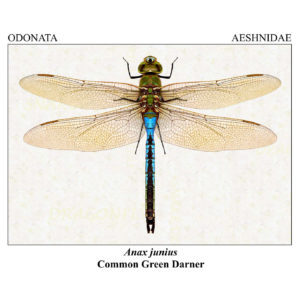Summary
Current Research
Throughout the last 35 years our Entomology program has addressed producer problems arising from pest pressure on field crops, and lately, we have focused on the bermudagrass stem maggot and red imported fire ant. Insect imagery is a separate facet of the work and focuses on dragonflies, though many other species are photographed as well.
Insect-Transmitted Plant Diseases
Like people, plants get diseases transmitted by insects. These diseases can be challenging to deal with; controlling the insects does not always guarantee disease control. Two successful research programs that the Stephenville project has been involved with are the reduction of tomato spotted wilt virus (TSWV) in peanuts and the management of cucurbit yellow vine disease (CYVD) in melons. TSWV was reduced in peanuts by focusing on changing the planting dates producers were using. By planting in a window from mid-May to Mid-June, disease prevalence was reduced by 95%. CYVD was brought under management by targeting the behavior of the vector, squash bugs. Squash bugs actually prefer squash to melons. By planting a border row of squash alongside the melon fields, producers were able to scout and detect early arrivals of the insects into the field and either treat the small squash rows or the entire field at their discretion. This significantly reduced the prevalence of CYVD in watermelons, pumpkins, and cantaloupes.
Insect Pathology
Insects also get diseases caused by microbes. One of particular interest is a microsporidian disease of red imported fire ants. The microsporidian has no common name, but its scientific name is Kneallhazia solenopsae. It is an odd sort of fungus that grows in the cells of fire ants and debilitates the nest. If the nest is stressed, it is lethal. It is passed from ant to ant through infected queens that then infect the larvae and workers in a nest. K. solenopsae is common in Texas, but cannot be grown in artificial systems like cell culture. This means it cannot be propagated for commercial use. However, it may be possible to stress the nests using non-toxic hormones registered for ant management to stress the nests and help push them into oblivion. Research by the Stephenville Entomology program is investigating the use of sub-lethal doses of the hormone to instigate disease in the ant colonies and reduce their vigor, ultimately killing them.
 Insect Imagery
Insect Imagery
Although digital cameras are now available to everyone, getting a quality picture of an insect can be difficult. Today the internet is full of excellent imagery and inspires people to take a closer look at creatures they once would have overlooked. The Stephenville Entomology program pioneered the use of flatbed digital scanners to obtain some of the first detailed images of living dragonflies. This resulted in the Digital Dragonflies website and in a book published by Texas A&M University Press titled ‘A Dazzle of Dragonflies.’ Three field guides which reference insects of Texas, Florida, Georgia, North Carolina, and South Carolina have also been released.
Other Projects
We have recently become involved with the management of the bermudagrass stem maggot. This exotic, invasive pest damages hay crops and are troublesome to manage because it is not always clear when to treat for this pest. In association with Texas A&M AgriLife Extension, we developed a calculator to assist in determining whether or not insecticide treatments are feasible or whether the cost of treatment is worth the savings. The calculator relies on knowing the value of the crop and the current percent infestation based on simple field sampling.
Additionally, we are looking into the environmental effects of the neonicotinoids imidacloprid, thiamethoxam, and dinotefuran, all of which have been in the news due to their indictment in insect pollinator reductions.
